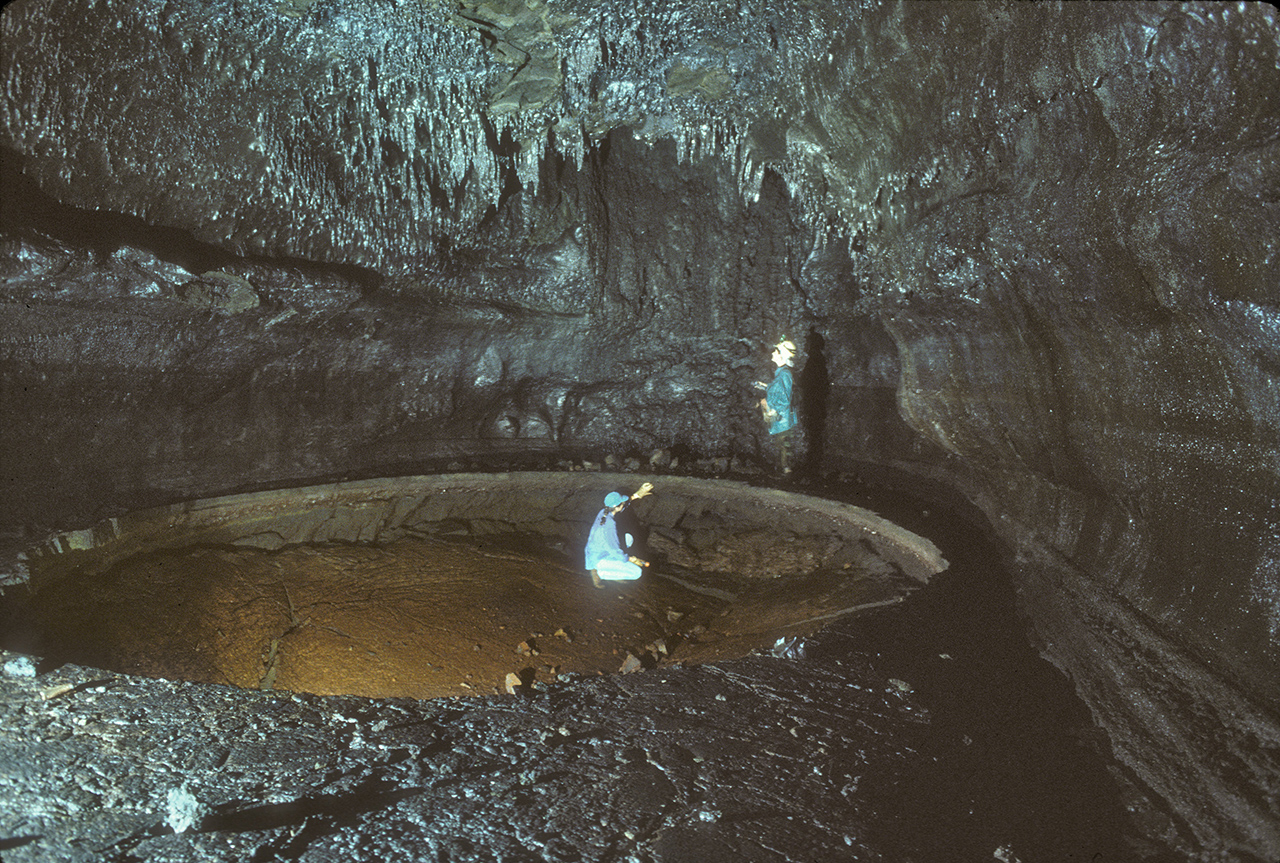Kazumura Cave on:
[Wikipedia]
[Google]
[Amazon]


 Kazumura Cave is a
Kazumura Cave is a
Kazumura Cave
{{Subterranea Caves of Hawaii Lava tubes Landforms of Hawaii (island)


 Kazumura Cave is a
Kazumura Cave is a lava tube
A lava tube, or pyroduct, is a natural conduit formed by flowing lava from a volcanic vent that moves beneath the hardened surface of a lava flow. If lava in the tube empties, it will leave a cave.
Formation
A lava tube is a type of lava ...
and has been surveyed at 40.7 miles (65.5 km) long and 3,614 feet (1,102 m) deep making it the longest and deepest lava tube in the world.
The cave
A cave or cavern is a natural void in the ground, specifically a space large enough for a human to enter. Caves often form by the weathering of rock and often extend deep underground. The word ''cave'' can refer to smaller openings such as sea ...
is located on the island of Hawaiʻi on the eastern slope of Kīlauea
Kīlauea ( , ) is an active shield volcano in the Hawaiian Islands. Located along the southeastern shore of the Big Island of Hawaii, the volcano is between 210,000 and 280,000 years old and emerged above sea level about 100,000 years ago. His ...
. Kīlauea is the most recently active volcano
A volcano is a rupture in the crust of a planetary-mass object, such as Earth, that allows hot lava, volcanic ash, and gases to escape from a magma chamber below the surface.
On Earth, volcanoes are most often found where tectonic plates ...
on the Big Island. The ʻAilāʻau lava
Lava is molten or partially molten rock (magma) that has been expelled from the interior of a terrestrial planet (such as Earth) or a moon onto its surface. Lava may be erupted at a volcano or through a fracture in the crust, on land or ...
flow that contains Kazumura Cave originated from the Kīlauea Iki Crater about 500 years ago.
History
One of the earliest documentations of Kazumura Cave was in 1966 when one of its entrances was designated as a fallout shelter. By the early 1970s, the cave had entered into the awareness of the caving community when Francis Howarth discovered new troglobitic moth species, '' Schrankia howarthi''. Later in 1981, a British expedition ended up surveying 7.27 miles (11.7 km) of the cave and it was then recognized as one of the world's longest lava tubes. By 1993, a single year of extensive surveying established that it was the longest in the world. Originally Kazumura was two separate caves known as Upper Kazumura and Old Kazumura. Kevin Allred and Mike Meyer connected the two caves after seeing a small connection between the two caves and enlarging it to permit entry. More connections were made later at Paradise Park Cave when it was connected to Kazumura through a breakdown pile. Later, a culvert was installed to keep the passage stable. Sexton Cave was discovered nearby; its passage ended where Kazumura's began. After some digging in black lava rock, Kevin and Mike Shambaugh got close to connecting these two caves. Eventually Shambaugh connected them after continuous digging. Kevin and Carlene Allred then surveyed the combined caves to a total of 29.32 miles (47.19 km), which made it the longest lava tube in the world. Meanwhile, the next cave upslope was Ola'a Cave which was nearly connected to Sexton but was sealed off by more black lava rock. The cave would later be connected to Kazumura by Kevin and Shambaugh in 1995. Smaller caves near Old Kazumura were also connected, including Hawaiian Acres # 1, Fern's, and Doc Bellou Caves. The latter two are connected by a tight crawlway. Kevin and Carlene Allred recorded their work in the Kazumura Cave Atlas: a complete map of all passages of Kazumura Cave. It lists a total of 40.77 miles (65.61 km) for the system as of 2002, with a linear extent of 20.05 miles (32.23 km). The Kazumura Cave Atlas lists 101 entrances, all on private property. Under current Hawaiian laws, landowners must be asked before entering any lava tubes on their property. At least one landowner runs paid adventure tours through his section of the cave as of 2016.See also
* List of longest caves in the United StatesFootnotes
References
External links
Kazumura Cave
{{Subterranea Caves of Hawaii Lava tubes Landforms of Hawaii (island)